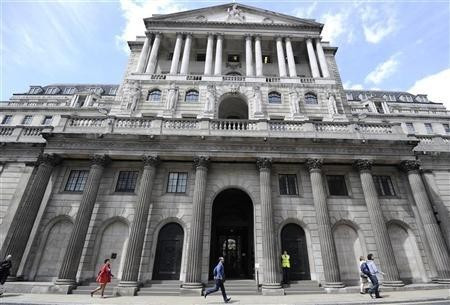UK FLS: Bank Lending Drops £300m Despite Billions Siphoned By Lenders

Net lending by banks using the Funding for Lending Scheme fell by £300m in the first quarter, despite £16.5bn having been drawn down from the credit easing initiative since it started.
The Bank of England (BoE) said that 13 of the 40 participants in FLS took £2.6bn (€3bn, $4bn) in the three months to March 31.
Twenty-seven of the FLS participants increased their lending in the first quarter.
In total, £5.1bn was lent to the real economy of consumers and small-to-medium sized enterprises in this period by these 27, against a contraction in lending of £5.4bn by the remaining 13.
"The picture of flat lending growth overall is broadly as expected at this stage reflecting reductions in some legacy portfolios being roughly offset in aggregate by expanding new lending," said Paul Fisher, executive director for markets at the BoE.
"The plans of the FLS participants suggest that net lending volumes will pick up gradually through the remainder of 2013."
Under FLS, banks are able to access discount loans from the BoE to a value linked to their stock lending to the real economy of consumers and SMEs. As a bank increases its lending to the real economy, so does the amount of cheap money it can access from the BoE.
Chancellor George Osborne expanded FLS at the end of April to shift the focus of the scheme's incentives towards SME lending, after criticism that it had done little to improve credit conditions for small firms.
Most of the lending so far has been to consumers in the form of residential mortgages, where costs have been reduced by FLS.
Osborne extended FLS to last an extra year until January 2015 and boosted the ratio of discount cash banks and access against their increased lending to small business, which was at 1:1.
For the rest of 2013, banks can now borrow £10 of cheap money for every extra £1 they lend to SMEs. In 2014, this ratio will drop to 5:1.
FLS will also include non-bank lenders, such as invoice finance houses, which are owned by parent banking groups taking part in the scheme.
The scheme's proponents say that while increased lending would be favourable, its success may come in underpinning lending to support it when it would otherwise decline sharply.
Researcher BDRC Continental, which compiles the SME Finance Monitor each quarter, found that just 27% of smaller firms were aware of FLS - though this is the highest awareness rate of any single initiative.
Just one in five SMEs said credit easing initiatives, such as FLS, would encourage them to apply for finance.
More than two thirds of SMEs - 76% - reported being happy non-seekers of finance in the first three months of 2013, a rise on the quarter before and the highest ever level.
© Copyright IBTimes 2025. All rights reserved.






















